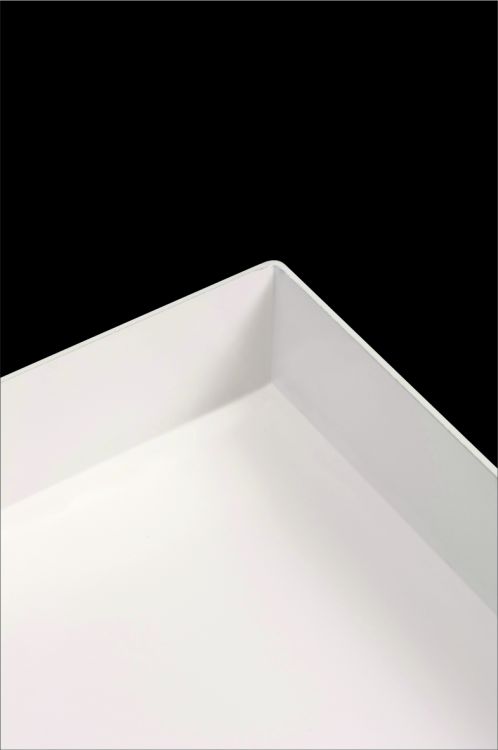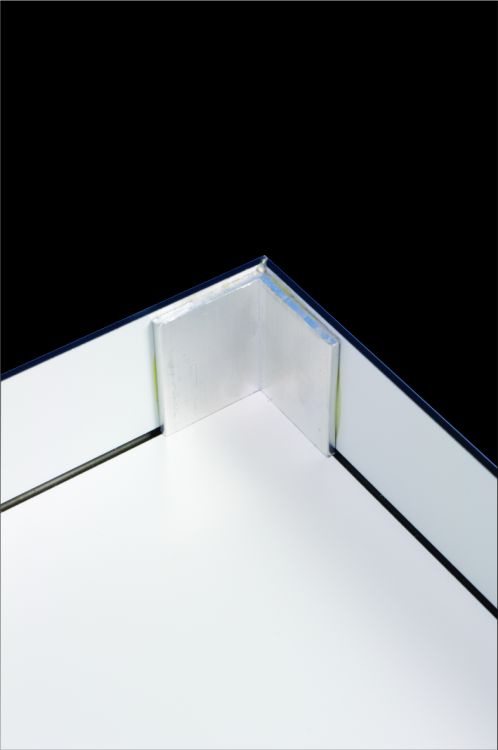Aluminium or Aluminium Composite (ACM) trays - What is best?


Composite or Aluminium?
Ashby Trade Sign Supplies are based in a 30,000 sq. foot factory just off the M3 in Hampshire. Over the course of our 20 years in the industry, Ashby have built up a highly extensive range of machinery, skills and knowledge that enable them to supply attractive, durable and relevant systems within the UK and Ireland.
Speaking with Steve Nicholas, General Manager at Ashby, he gives his perspective on the difference between ACM (Aluminium Composite Material) and aluminium tray signs. Steve tells us, “As a supplier of both Aluminium and Composite sign trays we are often asked which is the better product.
Our bias as a manufacturer of Aluminium Signage inevitably falls on the side of aluminium trays, in our opinion the scope for manufacturing far outweighs that of composite. Aluminium can be shaped, welded, curved and coated to almost any colour, whereas composite is limited to straight edge folding or shaped edges with no returns. And, if you require a particular colour, composite is difficult to paint due to the processes used, generally requiring the trays to be baked. Another consideration is the lifespan of composite, it is significantly shorter than aluminium therefore perfect for temporary signage. We find that most purchases of composite trays generally happen because of a pricing issue, and no thought to overall cost in the long term.”
Despite the limitations to ACM, Steve continues to tell us the pros and cons for both Composite and Aluminium trays.
“Below are some Pros and Cons for using either Composite or Aluminium Trays.
Pros for Composite panels
Composite is lighter than aluminium and has a smoother paint finish. When reverse routed with a groove and folded, the external corners have a crisper sharp edge. Application of Prints to the face and edges is easier as this is done prior to folding.
Cons for Composite panels
Composite is not recyclable so ends up in landfill. To manufacture composite trays, material is routed from the rear of the panel prior to folding, this reduces the overall strength of the material at the folds (normally 50% of the material is removed). To save money some people use inferior grades of composite with aluminium Skins as low as 0.1mm (Composite Skins for tray manufacture should never be below 0.3mm thickness.) The Faces of composite trays are more susceptible to dent damage. ACM Holds no fire rating. Composite trays cannot be welded, which prohibits shaped returns or curved faces. Due to the manufacturing process composite trays do not suit open backed systems.”
Pros for Aluminium
Aluminium is completely recyclable. Stronger than composite and harder wearing. Easy to paint, shape, fold, curve and weld. Has fire resistance.
Cons for Aluminium
Aluminium is heavier than composite. Application of prints to the face and edges is more difficult. Visually, when installed there is very little difference between Aluminium and Composite Trays, although aluminium will last significantly longer, it can easily be repurposed when required with a new coat of paint and some graphics, making it far more cost effective over the duration of its lifespan, whereas composite only offers a short term saving.”
www.ashbytrade.net
